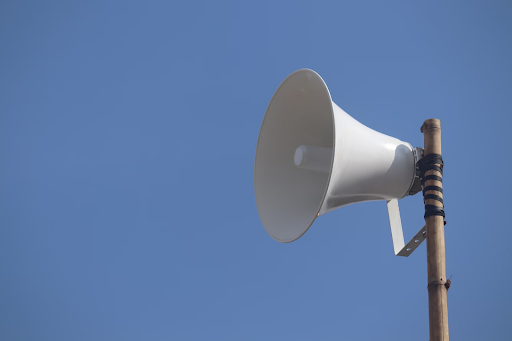The use of sound reinforcement systems has evolved over the years with several innovations that have enhanced the quality of the audio systems. The speaker horn is one of the critical elements that define the evolution of this system; it is used in public address systems, concerts, and other large events. This article aims to expound on the science of sound amplification.
It is necessary to know how sound waves propagate and how they can be magnified to comprehend the significance of horn developments. In its simplest terms, a horn is used to couple the driver, which is the component that generates sound, to the open air (read more here). This matching process greatly enhances the amount of acoustic energy that is transferred from the driver to the surrounding medium.
This process is where the shape and size of the horn are very critical. This design progressively enlarges the horn to reduce losses that happen when sound moves from the small driver to the large area. This design makes sure that much of the energy is channeled forward rather than being directed in all directions.
This is the reason why horns are rather common in environments that require high-quality and loud sound. Horns are excellent at moving energy in direct paths and as a result, can be used to cover large crowds without having to use a lot of energy.
History, Design, and More
The use of horns to enhance the loudness of sound can be dated back many years ago when speaking trumpets and megaphones were used. These simple devices that were put into use at that time worked based on acoustic impedance matching to increase the range of the human voice.
However, the first significant step that changed the face of horn production was the use of electronics in the twentieth century. The engineers started designing horns that were intended to be used with electronic drivers and this greatly enhanced the quality of the sound and the projection. Different forms of the shell, such as exponential, hyperbolic, and conical are used to enhance the performance.
The application of computer-aided design to the design of the modern horn cannot be over-emphasized. Thus, the behavior of sound waves can be modeled to determine the best horn design in terms of efficiency and distortion. This has resulted in the production of horns that offer very clear and strong sound due to precision engineering.
Practical Applications and Benefits
Horns are used in various fields starting from the small public address systems to the large concert halls. Given that they can amplify it and broadcast it over a longer range using less power they are very useful in instances where it must be heard.
For example, horns are commonly used in public address systems to enhance the loudness of announcements in areas that are large such as airports, stadiums, and shopping malls among others. Horns, for instance, are used to give a directional sound so that the message to be passed can easily be heard without interference from other sounds.
Horns are also widely used in cars especially in the car audio systems to ensure that it is well projected. Since horns are connected to car speakers, they can help provide a clear sound output for music and all forms of audio signals despite the background noise.
The above guidelines should help you in making the right decision when choosing the right horn for your needs.
When choosing a horn for an intended application, there are various factors that one needs to take into consideration such as the coverage area, SPL, and frequency. Knowing these factors will allow you to make the right choice and guarantee that your system will work at its best.
The first factor that needs to be looked at is the coverage pattern of the horn. This defines the area that can be covered by the sound produced by the horn. Various horns give a different pattern of coverage from a narrow beam to a wide pattern. The coverage pattern that should be used for your venue or application depends on the coverage needs you have.
Last is the horn material and how it is made. The choice of the material and the accuracy of the manufacturing process can greatly affect the loudspeaker horn characteristics and lifespan. A horn made with good construction means that your system will still give you good results in the future.
Looking Ahead
Over the years, people have been developing new technologies and as such, the speaker horns are not left out. New materials, shapes, and configurations of these devices are being invented and developed by researchers and engineers every day. Some of the recent developments include the use of 3D printing and computer simulations to design horns to certain performance characteristics.
An important and interesting area of growth is the application of smart technology in horns. With the use of sensors and wireless communication, the next generation of horns has the potential to fine-tune its behavior according to the surroundings and viewers’ responses. This level of adaptability can cause a massive shift in how sound is directed in environments that are dynamic and constantly changing such as concerts and public events.
Another possibility that can be discussed is the application of environmentally friendly materials for horn construction. With globalization and increasing awareness of the effects of global warming, it is expected that the market for green sound products will expand. Scientists are using biodegradable composites and recycled plastics in the construction of horns to provide high performance coupled with sustainability.
Integrating horn technology with other elements of audio innovation like beamforming and spatial audio has also the possibility of being very useful. These technologies, coupled together, may allow the development of advanced audio systems, capable of providing versatile and localized sound delivery, thus changing the ways of people’s interaction with sound.
Looking to the future, it can be said that further developments are also expected in the sphere of projection and will bring new interesting ideas and possibilities for further development.
Stay in touch to get more updates & alerts on TubeGalore! Thank you



